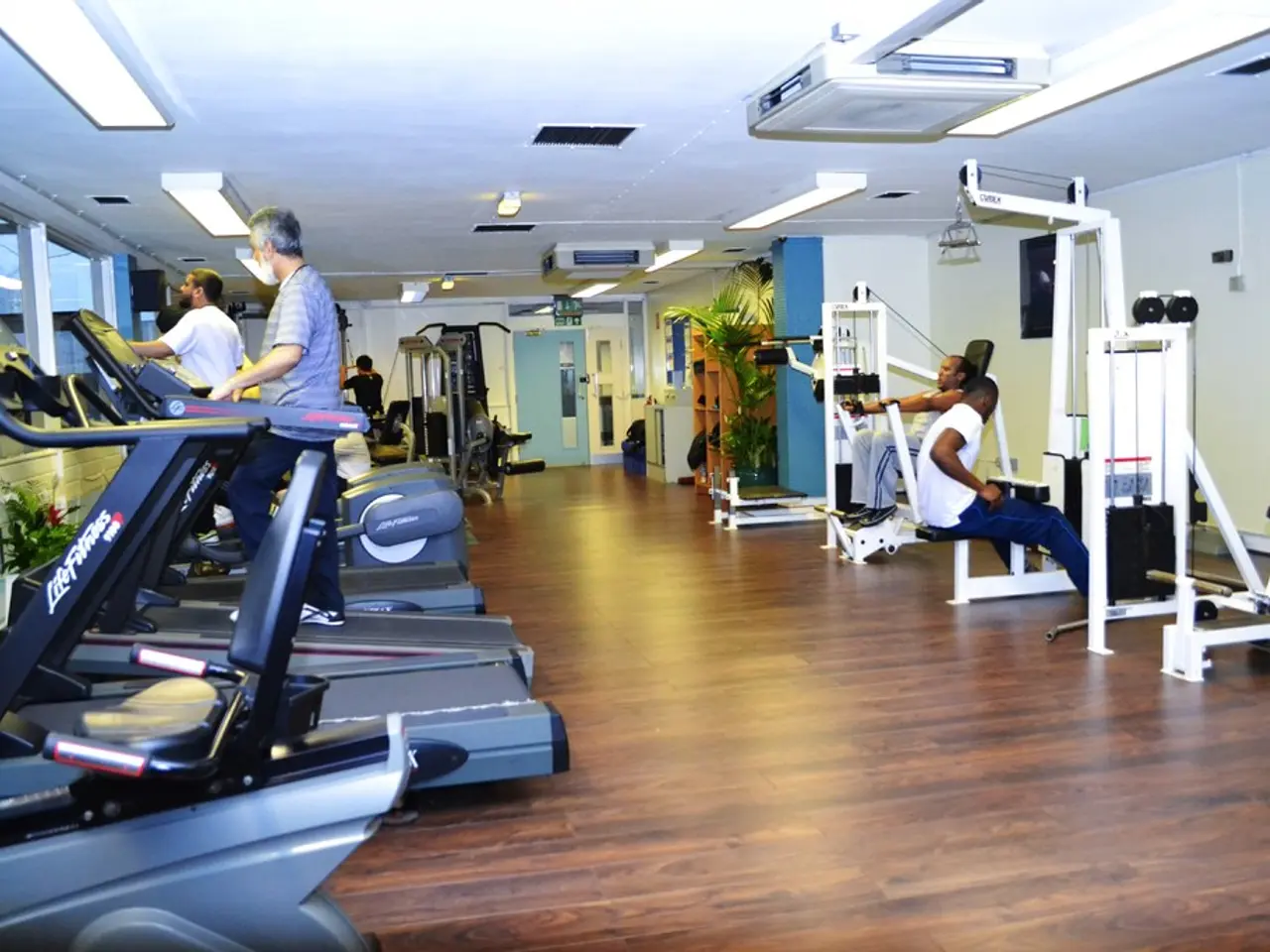Exercise Techniques: Isokinetic Exercises Explained, with Real-Life Examples Included
Isometric, isotonic, and isokinetic exercises are three different methods used in muscle rehabilitation, each offering distinct advantages for strengthening and rebuilding muscles.
Isometric Exercises: Building Strength Safely
Isometric exercises involve muscle contraction without any change in muscle length or joint movement. Examples include holding a plank or wall sit. These exercises are joint-friendly, improve muscle endurance, build strength without joint wear, enhance neuromuscular control, and are effective for early-stage rehabilitation or conditions like arthritis due to their low impact [2][4][5]. They also help reduce blood pressure and can be performed with minimal equipment or time [2].
Isotonic Exercises: Restoring Dynamic Movement
Isotonic exercises involve muscle contractions that change muscle length while moving the joint through a range of motion. This type includes both concentric (muscle shortening) and eccentric (muscle lengthening) actions, which are essential for improving muscle power, endurance, and functional movement after injury [1][3][4]. Isotonic training helps restore joint stability and functional strength by mimicking everyday movements [1].
Isokinetic Exercises: Precise Control and Measurement
Isokinetic exercises are performed with specialized equipment that keeps muscle contraction speed constant throughout the movement, allowing maximal resistance through the entire range of motion. This type is highly controlled and allows for precise measurement and adjustment of strength and endurance, making it ideal for monitoring rehabilitation progress and improving muscle power in both shortening and lengthening phases [1][4][5].
Choosing the Right Exercise for Rehabilitation
Programs typically start with isometric exercises to safely build initial strength and control, then progress to isotonic exercises to restore dynamic movement and function. Isokinetic training is used to fine-tune muscle power and balance in later stages or specialized settings [1][3][4].
While larger studies with more diverse participants are necessary to verify the advantages of one type of exercise over another, isokinetic workouts were found to be the best at increasing isokinetic strength, while isotonic exercise was better for improving functional performance in a 2017 study [6].
Safety and Precautions
Isokinetic exercise poses little risk for injury, making it good for people recovering from existing injuries. However, it's important to check with a doctor, start slowly, stay hydrated, stop exercise if problems arise, get help if necessary, warm up and stretch before a workout, and seek the help of a physical therapist to get started [7].
Research suggests that a 12-week isokinetic program could increase muscle strength and balance in children with Down's syndrome [8]. On the other hand, the 2013 study expressed concern about people engaging in strenuous endurance exercise using an isokinetic machine, potentially causing oxidative stress and potential heart attack in those with a predisposition to cardiovascular events [9].
Summary of Advantages and Differences
| Exercise Type | Muscle Length Change | Joint Movement | Rehabilitation Advantages | Typical Use | |-----------------|----------------------------------|----------------------|-----------------------------------------------|------------------------------------| | Isometric | None (muscle length constant) | None | Builds strength and endurance safely; joint-friendly; reduces pain; enhances motor control; minimal equipment needed | Early rehab, arthritis, stability | | Isotonic | Muscle shortens and lengthens | Movement through range | Improves muscle power, endurance, functional strength via dynamic motion | Later rehab stages, functional tasks | | Isokinetic | Muscle shortens/lengthens at fixed speed | Controlled full range | Precise control of speed/resistance; measures strength improvements accurately; improves concentric and eccentric power | Advanced rehab, strength assessment |
In conclusion, understanding the differences between isometric, isotonic, and isokinetic exercises is crucial for effective muscle rehabilitation. Consulting a doctor or physical therapist is essential to determine the best exercise program for individual needs and recovery stages.
- These distinct methods of muscle rehabilitation, isometric, isotonic, and isokinetic exercises, can also be integrated into broader health-and-wellness routines for an individual's physicial therapy, fitness-and-exercise, and therapies-and-treatments strategies.
- While isometric exercises are beneficial for early-stage rehabilitation, reducing risks of accidental falls due to their low impact nature, isotonic exercises focus on improving muscle power and functional movement in later stages of recovery.
- Incorporating science-backed therapies like isokinetic exercises, which offer precise control, measurement, and adjustability of muscle strength, into an individually tailored health and wellness plan can aid in ensuring optimal health and reducing the potential risks of health-related issues.




